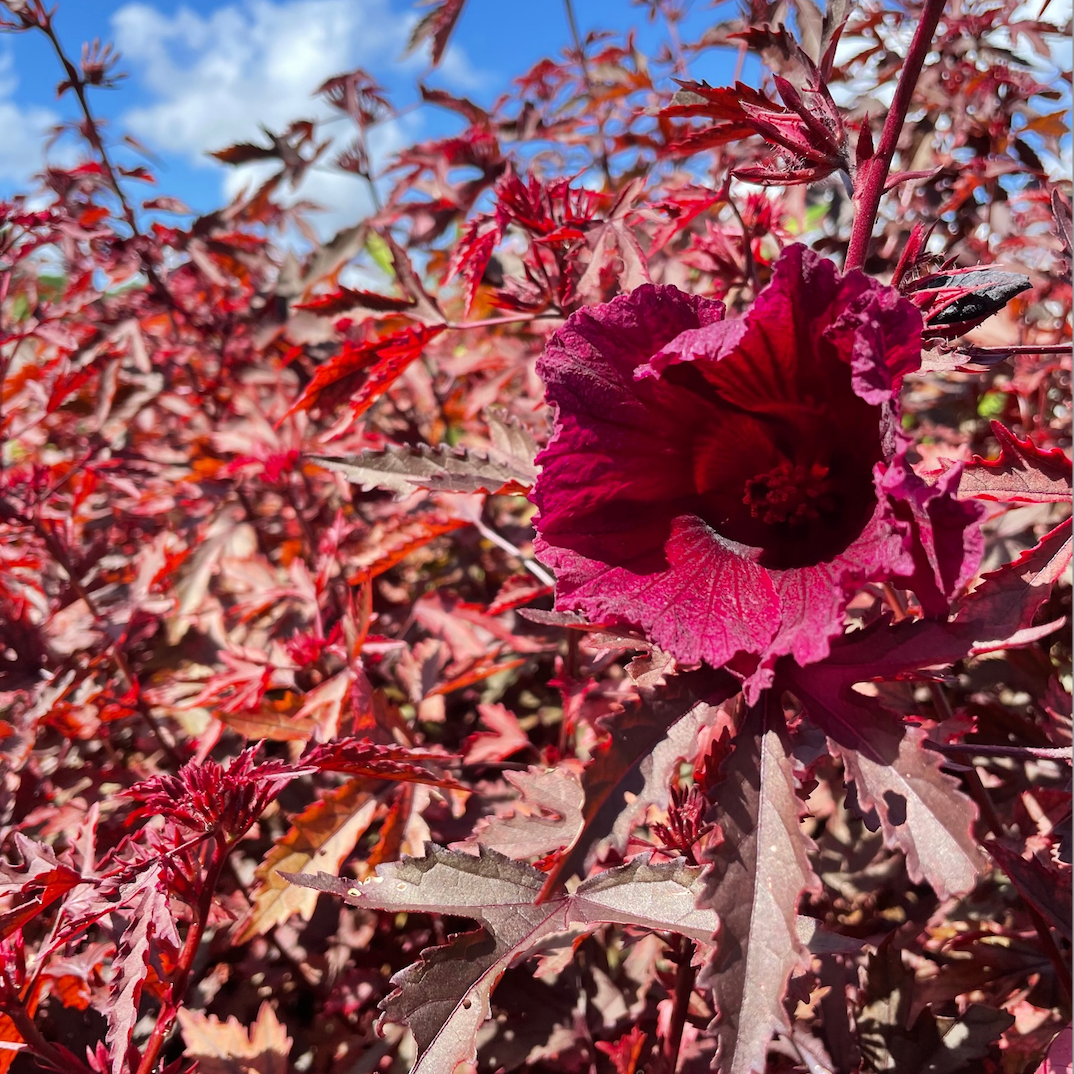Cranberry Hibiscus
hibiscus acetosella
days to maturity:130 days
plant spacing: 9 square feet
sunlight requirements: 6-14 hours hours
look out for: mealybugs in growing tips
harvest notes: prune off whole branches or individual leaves
seasons: spring, summer
annual
Cranberry hibiscus is a beautiful & tasty hibiscus variety that stuns with its beautiful dark red maple leaf shaped leaves and its maroon hibiscus flowers. Originally from the tropical regions of Africa its also heavily grown in Brazil, Southeast Asia, and the Caribbean as a food crop.
The leaves are edible and taste tart and lemony, like its cousin plant Roselle (the hibiscus variety that produces tea calyxs), and the flowers are edible too. They contain lots of antioxidants,calcium, iron, and vitamins B2, B3, and C. According to our resident tropical herbalist, The Garden Jules, “Cranberry Hibiscus contains a compound called polyphenols which are known to reduce inflammation in the body. Rich in vitamins A and C, this is a great plant ally for healthy skin and luscious hair. It’s also known to improve digestion because of its diuretic properties, which boosts bowel and kidney function.”
Chefs like harvesting the leaves when they are itty bitty and using them as garnish, and home gardeners looking for summer friendly leaf crops like to eat the leaves raw in salads or quick cooked in sautés and such. Cranberry hibiscus plants get large so make sure to give them lots of space. For that reason they’re best planted in your landscaping, not your raised bed. Cranberry Hibiscus is day-length sensitive, so plant in spring and come fall your shoulder or head tall plant will be covered with flowers for all humans and pollinators to enjoy.
While Cranberry Hibiscus is referred to as a perennial it does produce seed and significantly decline after it flowers in the Fall, so we treat it like an annual. Buying seeds online is shockingly expensive since its very labor intensive to harvest the seeds, but luckily it propagates easily by woody and young stem cuttings. Happy bushes will grow to be about 6 feet around and just as tall and they respond positively to pruning if planted in the spring.

